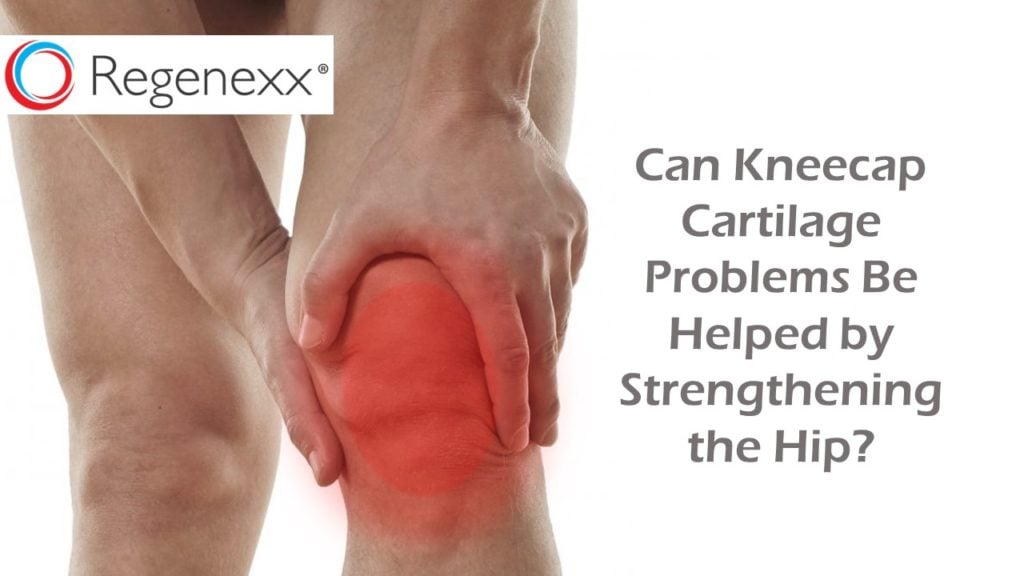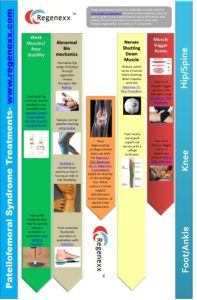Kneecap Cartilage Problems May Originate In the Hip
Do you have Kneecap cartilage problems? It’s a very common complaint, but one for which there are few good solutions offered by traditional Orthopedics — mostly because it’s seen as an individual problem, rather than signaling a problem within a larger system.
How is Patellofemoral Syndrome Treated in Orthopedics?
Patellofemoral Syndrome is when the kneecap doesn’t track properly in the groove. 
Are There Other Solutions to Kneecap Tracking Problems?
There are many nonivasive treatment approaches to Patellofemoral Syndrome as seen on the Infographic at right. There are also several studies demonstrating the biomechanical issues which are causative, and how that should inform treatment. I’ve blogged before that the hip bone is connected to the knee bone in looking at how patients get patellofemoral pain and cartilage loss. That study suggested weak butt muscles were to blame in patients with knee cap arthritis. Another blog post on a kneecap pain study showed that strengthening the hip adductors helped the VMO muscle recruit better (weakness in this inside quadriceps muscle is thought to lead to bad kneecap tracking and cartilage loss). Yet another blog showed that kneecap braces didn’t seem to work. Finally, yet another reviewed studies with conflicting evidence that orthotics could help pain in the kneecap.
In that complex context of information comes yet another study that investigated the biomechanical origins of patelllofemoral pain in women. This study used sophisticated movement tracking devices to check on the movement of the knee and hip when women with and without patellofemoral syndrome were stepping up and down at various knee angles (higher or lower steps). What did they find? The study findings are a difficult read, but basically that there was a greater likelihood for the knee or hip to move inward (knee and hip adduction) in women with patellofemoral pain. In fact, a greater tendency for the body to cave in toward that side. This makes some sense, as these movements allow the kneecap to track to the outside of it’s groove and put more stress on the outside of the patella in it’s groove.
The upshot? Weakness in the hip muscles (gluteals) seems to be a common theme in kneecap pain syndromes. While kneecap taping can often help symptoms, these studies would suggest that working on strengthening and restoring normal biomechanics in the hip muscles may be time well spent.
If you have questions or comments about this blog post, please email us at [email protected]
NOTE: This blog post provides general information to help the reader better understand regenerative medicine, musculoskeletal health, and related subjects. All content provided in this blog, website, or any linked materials, including text, graphics, images, patient profiles, outcomes, and information, are not intended and should not be considered or used as a substitute for medical advice, diagnosis, or treatment. Please always consult with a professional and certified healthcare provider to discuss if a treatment is right for you.

